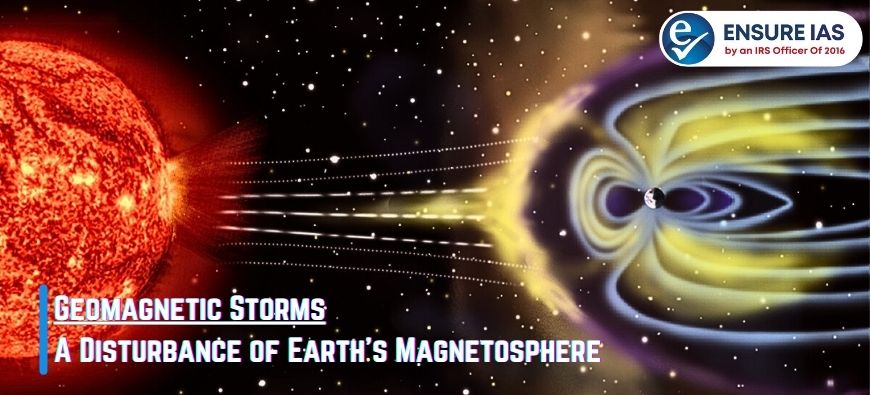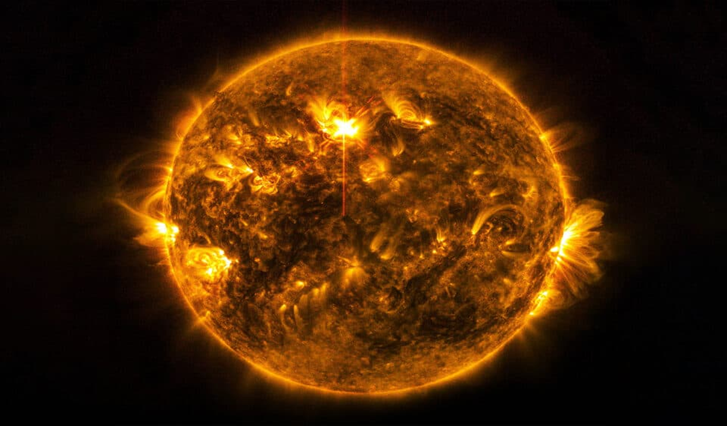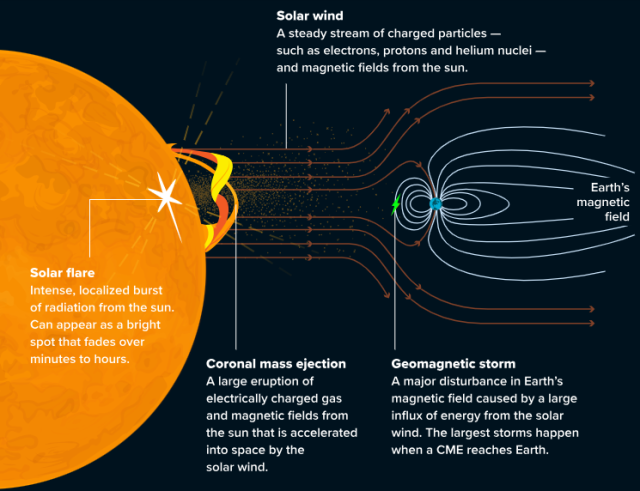- Courses
- GS Full Course 1 Year
- GS Full Course 2 Year
- GS Full Course 3 Year
- GS Full Course Till Selection
- MEP (Mains Enrichment Programme) Data, Facts
- Essay Target – 150+ Marks
- Online Program
- GS Recorded Course
- NCERT- First Ladder
- Polity
- Geography
- Economy
- Ancient, Medieval and Art & Culture AMAC
- Modern India, Post Independence & World History
- Environment
- Governance
- Science & Technology
- International Relations and Internal Security
- Disaster Management
- Ethics
- Current Affairs
- Indian Society and Social Issue
- CSAT
- 5 LAYERED ARJUNA Mentorship
- Public Administration Optional
- ABOUT US
- OUR TOPPERS
- TEST SERIES
- FREE STUDY MATERIAL
- VIDEOS
- CONTACT US
Geomagnetic Storms: A Disturbance of Earth's Magnetosphere
Geomagnetic Storms: A Disturbance of Earth's Magnetosphere
17-05-2024

The most powerful geomagnetic storm in the last 2 decades recently hit Earth, causing radio blackouts and shutting out the northern lights in the southern United States.

What are Geomagnetic Storms?
- Definition: A geomagnetic storm is a disturbance of Earth's magnetosphere, triggered by the efficient transfer of energy from the solar wind into Earth's surrounding space environment.
- Causes: These storms originate from variations in the solar wind, which induce substantial alterations in the currents, plasmas, and magnetic fields within Earth's magnetosphere.
- Solar Wind Conditions: The solar wind conditions that effectively create geomagnetic storms are characterized by sustained periods of high-speed solar wind and a southward-directed solar wind magnetic field at the dayside of the magnetosphere.
- Association with Solar Coronal Mass Ejections (CMEs): The most intense geomagnetic storms are often associated with solar coronal mass ejections (CMEs), where a massive quantity of plasma and magnetic fields from the sun reaches Earth.
Effects of Geomagnetic Storms:
- Magnetospheric Currents: Geomagnetic storms generate intense currents in the magnetosphere, modifying the radiation belts and causing heating of the ionosphere and thermosphere.
- Auroras: These storms can heat the ionosphere, giving rise to auroras on Earth.
- Radio Communication Disruption: The heated and distorted ionosphere during storms affects long-range radio communication that relies on sub-ionospheric reflection.
- Satellite Drag: Ionospheric expansion due to these storms can increase satellite drag, making their orbits challenging to control.
- Satellite Electronics Damage: Static-electric charges can accumulate and discharge, potentially damaging satellite electronics.
- Global Navigation System Disruption: Geomagnetic storms can interfere with global navigation systems, impacting their accuracy.
- Geomagnetic-Induced Currents (GICs): Storms can induce harmful geomagnetic-induced currents in the power grid and pipelines.
Solar Wind and Coronal Mass Ejections (CMEs):

- Solar Wind: The solar wind is a steady stream of charged particles, primarily protons and electrons, emanating from the sun's outermost atmosphere, the corona.
- Plasma State: These charged particles travel through the solar system in a plasma state, at speeds ranging from 250 to 500 miles per second.
- CMEs: Coronal mass ejections are large expulsions of plasma and magnetic fields from the sun's corona into interplanetary space. They carry a colossal amount of material, including electrons, protons, and heavier ions, and magnetic fields. CMEs travel at speeds ranging from 250 km/s to 3000 km/s and can reach a significant size by the time they reach Earth.
Must Check: Best IAS Coaching In Delhi
India’s EV Mission: Progress Delayed, Not Denied
India’s EV Mission: Progress Delayed, Not Denied


